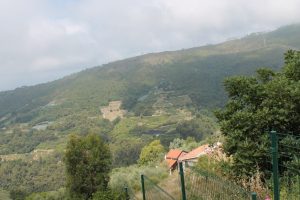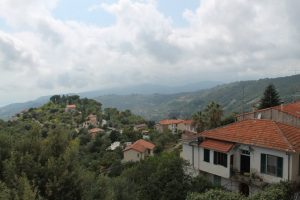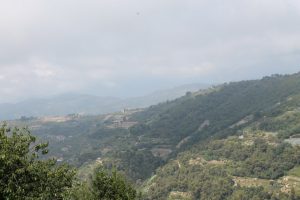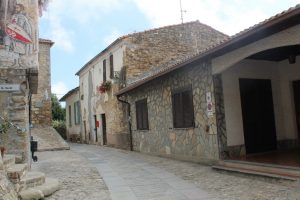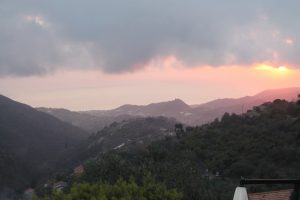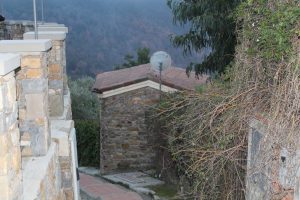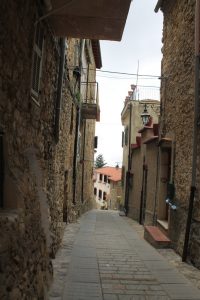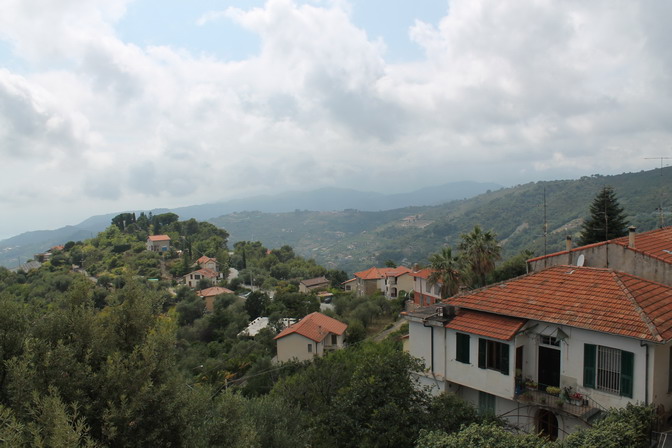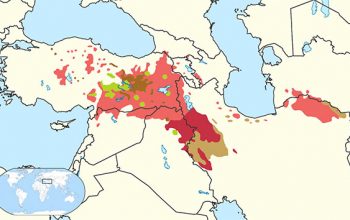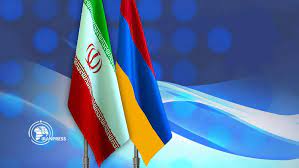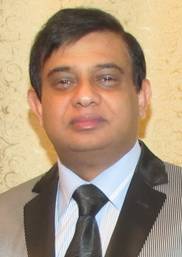
Prof. Santhi Jayasekara
Since ancient time the expression Genius Loci – “genious of place” is well known. And the concept that captures the essence of this definition probably has a longer history.
Genius loci – the Spirit-protector of living or dead, large or small, whether village or town, a mountain, a separate tree or, finally, invisible unique atmosphere of a place or unexplained phenomenon.
This definition applies to humans or to being that protects a particular location.
Even Virgil in his Aeneid wrote that the snake appeared to Aeneas was adopted by him for the Genius loci.
And later the grammarian Servius (IV C.E.), commenting the lines of Virgil, said, “as there is no place without the spirit”.
The ancient authors wrote about the Genius Loci (G. L.) as a particular place given to them.
And the great Alexander Pushkin with his lyceum friends wrote on the stone in the Park in Tsarskoye Selo Lyceum G. L. – Genius Loci.
As claimed, the definition of “Genius loci” has a spiritual origin, or even sacred, mystical. Indeed, let’s recall the tenacity with which the old Testament David conquered the Salim town from the Jebusites. And pilgrimage, existing from immemorial time almost universally to various memorable or ancestral places, inspiring spiritual renewal, especially when the subject of worship are the relicts, icons, etc.
In ancient times, for example, Stonehenge was refered to such phenomena.
They assume that G. L. connects a person with the given place, with nature, with the material environment and, at the same time,with inexplicable influences. It is in such places the link of spiritual and emotional origins of man with the manifestation of natural forces is indicated. Thus there is an “awakening” of human abilities and its activation.
Other interesting natural phenomenon related to the topic, is the so-called phenomenon of Place of Power. These are particular pieces of land, large or small, on which there is a strong energy.
The concept of “energy” used in this context has no scientific explanation.
There is a wide set of such amazing examples. It can be both natural and man-made objects, places associated with historical events or religious activities of people.
The man in Places of Power feels a strong impact, which can be manifested both physically and emotionally. Moreover, the impacts may be both positive and negative.
However, the places of Power after some time can lose its energy, decline. For example, the already mentioned Stonehenge was once a powerful Place of Power, but now it has lost its properties.
Constantly the Places of Power arise and disappear on earth.The attenuation of the Places of Power energy can be compared with unmatched scale, with decreasing activity of the volcano.
Let the reader forgive us for a grim context of this comparison. We wanted to sketch a figurative example.
It is possible that the Power Places energy also calms down at some indefinite time.
Let’s refer again to the ancients, back in those days it was known about the magical properties of the Places of Power.
Such places were revered, there were built sacred buildings, temples, monasteries, churches. Interestingly that the worshippers in Places of Power have a kind of “feedback” with the object of worship.
The pilgrims, having applied the relicts, participating in Church services and ministries in churches or monasteries, according to their opinions, feel elation and peace, there are known cases of healing from serious illness. Also they know amazing and inexplicable facts, which the Church calls miracles. Such miracles can be attributed to the phenomenon of the Holy fire on the eve of the Orthodox Easter at the Church of the Lord in Jerusalem, or “revival” of the blood of St. Januarius in Naples and many other miracles.
Generalizing the concepts of “Places of Power” and “Genius loci” we can say that sometimes (no, not always) they can be perceived as a uniform phenomenon.
But “miracles” can be treated skeptically. Let’s remember that famous Albert Einstein called the Bible with all the miracles described there as a childish.
So, the Place of Power has the attraction, as we said during the active period, it is here that there are certain settlements, communities, organizations, it become a place of pilgrimage, thanks to its features, etc.
And now let’s speak about the Principality of Seborga.
From the immemorial time on the place of the Principality of Seborga Liguria people lived. Before them there were the Venetian, the history of which is dark and obscure.
Originating near Mountain BEGO (Mount Bego) was an important religious centre like the Greek Olympus. Liguria was once inhabited the whole of Europe till the North, and then were driven out by Celts to the Mediterranean sea. This was accompanied by an interpenetration of these peoples and their mutual assimilation with part of Liguria.
What people were the Celts? We know about them that they were magicians and sorcerers, and moreover loved gold. They left as a memory their legends, the mysterious Stonehenge in southern England, and descendants – Scots, Welshmen and Irishmen who do not really differ from their contemporaries.
But probably they left traces of their presence in relationships with Leguria.
Let’s remember also the key words of this paragraph: the presence of a religious center, magic and sorcery, left by the Celts.
In 400 C.E. on the site of today’s Seborga was the ancient fortress. According to other data there was a Church and monastery, but this statement is not categorical. We can not say for sure that at this time Christianity has already entrenched in these places.
Surrounding tribes of the Visigoths were Arian heretics, i.e. opponents of the dominant faith.Yeah, I guess it doesn’t really matter. And the crucial fact that the place was sacred, i.e. the site (if not center) of the spiritual life for the surrounding community.
In 600 C.E. the Cathars were accomodating here, who were considered by the recipients of the Arians. They preached asceticism, reaching to poverty.
Who were the Arians? Who were the Cathars? Nowadays when Europe is spreading atheism, few people are interested in Arians, at that time anathemized, and the Cathars, their followers considered to be heretics.
Cathars were fighting against the power of the Roman Church, and as already mentioned, preached asceticism and were uninteresting to the owners of these lands.
Here we want to emphasize that in this case the site of the present Seborga was a Holy place for the Cathars.
And being pressed by the Benedictine monks who were also rebuilding the place by Church, but the Christian buildings.
And Seborga itself became a sovereign Imperial Principality of the Holy Roman Empire.
And in 1118, the first nine knights Templars were consecrated there, those famous and mysterious, ever the selfless defenders of Christian pilgrims, but ended his career in the fire of Inquisition.
So was the fate of the knights Templar, the Order became rich and independent. They claimed as the Holy Grail and the Cross of the Lord, and even the Ark of the Covenant taken by the Templars from the Holy Land and hidden in secret vaults.
Their independence has angered the Vatican, and wealth aroused the envy. There was a lack of a pretext to bring down the Order. And the pretext was found, or rather was invented.
Templar declared heretics, in communications with the devil and all that was available to the imagination of the Inquisition
In 1307 in Paris the French king Philip IV occupied the headquarters of the order. After brutal torture, Jacques de Molay, Grand master of the Order, in 1314 was sent to the fire. Before to be consumed by fire Jacques de Molay shouted to the winners admiring the execution : “Pope Clement V, in forty days you will join me, and you, the king, will come to us in a year, and France will have big troubles”. These words are documented. And the prophecy came true.
Forty days later martyred Pope died, when falled on the hunt with horses. And the king died after one year. And France entered the war, the longest war has began- the Hundred Year’s war between France and England.
But the Templars have survived, not all were waiting for such a horrible death as in France. They say they just went out from highlighted scenes of the history.
Attention! Today You can become a knight Templar receiving this title in Seborga.
And another interesting fact relating to the Principality. Theologians have found in an ancient theological treatise the assertion that when the end of the world comes, only the Principality of Seborga will survive. Do not smile, these are the words of the theologians. Also they write that some foreigners bought land in Seborga, in the hope of surviving during the Armageddon, the final battle between Good and Evil on Earth.
Some skeptics call this simply a fraud. But to verify the true of these disputes we need a lot of time. So, let’s sum up the interim results of our descriptions.
The place where the Principality of Seborga is situated, can be attributed to so-called Places of Power.
Apparently, the manifestation of the specific properties of attraction and other abilities has not always been presented.
Apparently, there are circumstances and conditions, when this Place of Power shows its exceptional features.
It is observed that among the attributing features can be effects on humans, raising his spiritual potential and intellectual level; environmental impact, creating, calling “its own atmosphere”, and most importantly can provide overall health benefits on the human body. Combined with modern and non-traditional methods of healing, this natural phenomenon – natural gift can serve for benefit of the people.
Of course, the beneficial effects can not be unfounded. In our opinion, the greatest benefit can be achieved in the organized health care practice.
There are material, scientific, in some sense, explanations of ones or anothers unusual natural phenomena in some places of our planet.
It includes, for example, Calais, the well-known Tibet mount, a famous place of pilgrimage, or Table mountain in South Africa, etc.
Another impact, as we have said, are certain historical artifacts, sacred objects, etc.
Scientists find explanation for many “miracles”. Its inside – captive processes, the so-called crust fractures, effect of magnetic field, etc.
The question of the Genius loci, such psychological phenomenon, has left open. On the predictions and prophecies, also belonging to the Genius loci of the place in which there is a proof. He comes in prophetic dreams, intuition, premonition. I remember the famous physicist Tesla, born near Liguria, spoke about his discoveries ahead of time that all the ideas come to him from outside, “I am not the author of these ideas!”.
Facts, dates, arguments of the history of the Principality of Seborga.
I have to repeat, but without the poetic notes.
So, in the place where now the Principality of Seborga is situated, in 400 C.E., was the ancient fortress. And this fortress was called Castrum of Sepulcri.
We omit the legendary and mythological information about the presence of previous peoples before Liguria and Romans, while it is known they were Venetians, Etruscans, Liguria, Celts, Romans, Visigoths.
In the year 600 Cathars appeared at this place. And for them Seborga was a Holy place.
In the year 820 Ludovic Pious and Pope Padcali I created the first state education of Mapk SeaAlps and became its first rulers. Claudilo of Torino has appointed Prince Ventimiglia as the head of this “education”.
In the year 954 the priests from Periscope Abbey proclaimed Seborga as a Principality. In the year 1095 the Benedictines of the Principality participated in the Crusade.
And in the year 1118 the Prince consecrated the first nine Templars. They believe that it originated the movement of the Templars. Further, the Principality of Seborga was ruled by monarchs who chose the Abbot, which is at the same time the Prince of Seborga. In fact, however, the Principality was ruled by a Council of monks.
Let’s note that in 1666 the mint was created in Seborga, where they minted its own coins, Luigino.
In 1729 the Benedictines sold Seborga to Victor Amadeo II of Savoy, the king of Sardinia.
Attention! Documents of the sale have disappeared, having left no trace. And the Princedom itself was not mentioned in official documents.
Many years after the Republic of Genoa has formed, nor the Congress of Vienna, nor in the act of union of Italy (1861), i.e. in documents where the existence of the Principality of Seborga must be.
And Duce Mussolini called the Principality of Seborga the sovereign state.
In 1946 the Principality of Seborga wasn not again included in the Italy structure in making all post-war documents.
Finally, in 1961, a resident of the Principality of Seborga, a local historian Giorgio Carbane, studying the ancient archives, has found that Seborga is an independent Principality.
For two years the residents of Seborga were getting used to this idea and in 1963 in Seborga they held a referendum and all the citizens of the Principality voted for independence. They notified the Italian authorities and notified some other countries about the results of the referendum.
Obviously, the conducted archival research are focused on the proof of the sovereignty of the Principality of Seborga. These are not some separatists, and not even the self-proclaimed government.
We have said already that the Principality of Seborga is the first constitutional monarchy. Perhaps only the Republic of San Marino can surpass in its historic ambitions the Principality of Seborga.
So, in 1963, after the referendum Giorgio Carbone itself became its first monarch, Giorgio I. His role in the formation of the Principality of Seborga is invaluable. His historical studies and surveys, verification of historical materials and documents, creation on its basis of specific studies and proposals, and finally, the referendum. It should be noted that Carbone complied with all constitutional and other official, pertinent formalities.
It is interesting that the Italian authorities had little reaction to this event. Time passed, no disturbances were observed, there were not troublemakers, taxes have been paying, the law was not violating. And there was no oppositions in the Principality, the subjects of the Principality knew each other well. Well, what confrontation can arise?
There was a cooperation and collaboration between the authorities of the Principality. The Principality is an obedient subject of Italy. And in response, the Principality enjoys public services: social welfare, health, police, etc.
The Principality is located in the administrative district of Liguria, in the Republic of Italy.The actual control of state power is not contested. Citizens of Seborga participate in general elections, use common infrastructure, etc.
Nevertheless, the Principality claims to sovereignty in the full sense of this word.
So, the 27th of November, in the interview with the newspaper “The Telegraph”, the monarch of the Principality Giorgio I wrote that “the Principality of Seborga has recognized 20 States, and that the Principality of Seborga has its embassies in 10 countries”. This interview was published on 27 November 2009, and two days before the publication the Prince Giorgio I died.
Any other information on the international recognition is not be published.
The entrance to the Principality of Seborga is guarded by the border guards. And over the buildings of the Principality there are national flags of Seborga, as a symbol of national pride.
It is possile to enter the territory of the Principality with the passport of Seborga, which must be purchased on arrival. This procedure is similar to the registration when entering certain countries.
According to the Constitution, the Principality of Seborga is controlled by the Parliament, which is called Priori. It consists of 22 priors, elected by head of state from the citizens of the Principality.
Prince also elects the members of the Crown Council, headed by the Chancellor, who is also considered to be the Prime Minister.
The Crown Council is composed of 9 Ministers, responsible for all aspects of the management and functioning of the country.
The Principality has its mint and mints its own coins luigino and centesimo. These coins are made of silver, bronze and copper. Need to be reminded that it is the creation of a private mint that is a revival of the historical events of 1666, when the mint was created, who also minted luigino, appreciated in the neighbouring countries of Italy and France.
The 25 April 2010 the new ruler of the Principality of Seborga was elected, it is Marcello Menegatto, a 31-year-old Swiss (but with Italian roots) from Lugano.
According to the Constitution of the Principality of Seborga its ruler may be a native of Seborga, who was baptized in Seborga. However, in this case the Constitution has been changed.
Generally in the history of European monarchies the invitation to the Board of the foreign ruler is an existing practice.
So in the case of Marcello Menegatto there is nothing fundamentally new.
In the policy statements the elected Prince said:
“My first objective will be the creation of new infrastructure and jobs. I will also focus on the development of state status and documentation that conclusively proves our historical origins and rights, and will continue our fight for independence from Italy”.
The Prince knows to take a pattern by, near we have Monaco, a prosperous Principality, even a small state too.
Yes, today the indigenous Seborga inhabitants are less than 400 people, but on the territory once owned by the Principality, more than 2,000 people live and the area takes 14 sq km. Whether they have a similar history with the people of Seborg in the true sense of the word? Here we have something to clear.You can pay attention to the state of the Order of Malta, also located in Italy. And the area of this State is only one building in the old part of Rome, plus a mansion in Malta. However, the population is about 13 thousand people according to the latest data. It is clear that the citizens of Malta live outside of it.
So the Principality of Seborga has a pattern to equal.
And now let’s temporarily change the subject. The following passage is unusual, it relates to the different area, technical civilization, in particular nanotechnology.
On the eve of 1960 at California technological institute at the Christmas dinner of the American Physical society, the American physicist Richard Feynman presented (and then published) a work, in which he estimated the prospects for miniaturization. The work called “Downstairs there’s plenty of space”. And forty years later the whole world faced a new scientific and technological phenomenon of nanotechnology. Faced – doesen’t mean stopped, but took, began to use and develop both science and practice. Today nanotechnology heads the cutting-edge field of science, is of great theoretical asset and impressive results.
And the weakest analogy suggests that in knowledge, in civilization development there is no limit of “small” neither in scientific nor in a spiritual environment and form of human existence.
Now let’s go down to earth. Lets’ recall that simultaneously with the adoption of the Constitution of the Principality of Seborga the first steps of improvement of society have been made, the improvement of the pension system and the state of health care were mentionned in the first documents, i.e. a socially oriented program for changing existing practices was provided.
New modern projects, in addition to political activity include economic and social activities.
Of course you should continue to cultivate olives and flowers, if there is a demand. Need to mint coins, we have already said that this is a revival of the old tradition. This money can be traded in the Principality, attract numismatists. Luigino is produced in limited quantities and is considered one of the most expensive currencies in the world. In particular, it has a proportion to the dollar as of 1:7.
Current economic practices in Seborga is tourism, as well as in Monaco, in Rome and throughout the Italy.
In the first years after the proclamation of the sovereignty of Seborga, tourists were interested in the new itself, in the very act of birth of the Principality.
Currently tourism is supported at the query level of curious travelers. Tourists admire the wonderful climate, amazing pictures of the surroundings, acquire memory cards and gifts.
The Principality of Seborga is a discovery for stamp collectors. And some tourists remark the cuisine of Seborga, which specific dish is rabbit. But the Principality has its own, inherent only to Seborga sources of income; it is the sale of titles and lands.
As we have said, for 50 thousand euros you can become a nobleman, a knight-Templar.
We mentioned again the knights Templar not by chance. For comparison, let us explain our idea. For example, the Order of Malta, that is under the patronage of the Vatican and has a state recognition, has the ability to receive large donations from various official and private sources and on this basis to carry out its charitable activities to address social issues, etc.
The Templars, or rather what is left of them are the unwanted.
Let’s recall that the Templars were created to protect pilgrims giong to the Holy Land, the Templars protected them and helped in every way
There is no doubt that the destruction of the Order was under a predatory interests of the French king Philip V. And though Philip V got revenge in the predicted timing, the Order of the Templars has declined. Even though they remained in Cyprus, and have saved its lives in Germany, the Order itself stoped to exist .
How these facts can be used? The fact is that today Christianity stands in need of protection, in ensuring its foundations and principles, in opposition to atheism, etc. Of course, we are talking about “soft power” of resistance , and the promotion of Christian values, morals and ethics.
The organization of the knights Templar on the basis of possibilities of the Principality wouldn’t be artificial. Of course it will require normalization of relations with the Vatican.
We should take into account the following information:
In 2001 in the archives of the Vatican by accident (!) the document was found showing that Pope Clement V has removed from the Knights Templar all incriminations of heresy in 1314, i.e. in the year of execution of the Grand Master of the Order.
And in 2007 the “Processus Contra templarios, or the Investigation of the Holy Altar in the matter of the Templars” was published by the leadership of the Vatican that recognized the Templars guilty of such “grave sins” as embezzlement and sexual immorality, but do not believe.
If you understand that the confessions of the Templars were obtained after long agonizing torture, we can trust these conclusions.
When considering the so-called “sins”, then punishment cannot be infinite. Besides homosexual love, which is attributed to the knights Templar today is considered a sign of democratic society in Europe.
And the idea of embezzlement is doubtable. The Templars were actively engaged in financial activities, gave money in growth, were remunerated for the provision of security, etc. What kind of embezzlement can be discussed if the knights Templar was an independent organization, not associated with any financial or other obligations with the States of Europe (excluding some issues).
We believe that our arguments can be taken into account when initiating contacts with the Vatican. From accessible innovations there is of interest the project of creation of the research center of health, speaking modern language.
Great potential for tourism development is historical past of the Principality of Seborga.
Imagine what was happening on this earth within the changing these peoples, civilizations and cultures. The historical creation of panoramas, historical and cultural exhibits, historical re-creating of the decorative images of land and public places of settlements existed here, of course, on the appropriate scale and reasonable cost – all this will be interesting for tourists and history amateurs.
It’s not our task to teach the leadership of the Principality to stimulate its economy. We just gave examples that we have seen in England and Cuba, Scandinavia and Russia, etc.
I would like to finish our story with the same thoughts that we started it.
We talked about the Genius Loci, the Place of Power. The Genius Loci may be the actual geographic area and memorable or sacred, and (and this is important) nonmaterial, energetic, spiritual impact and, even outstanding persons.
Most important factors, such as attenuation and activation of properties of the Genius Loci again. Moreover, such an awakening may be caused by external phenomena and processes.
Might be is it time for revival?
